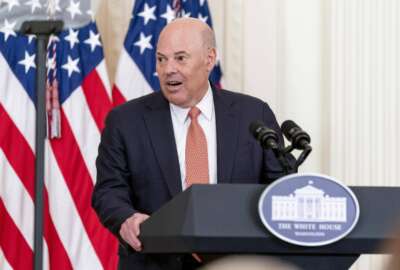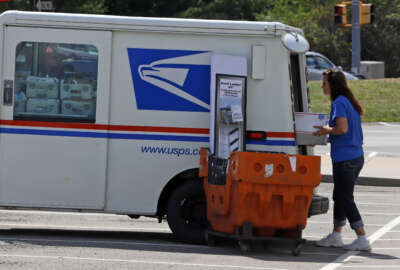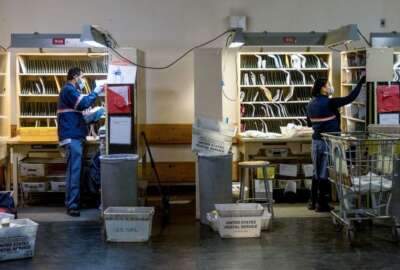
USPS expects to raise mail rates again next year, warns it remains in ‘financial hole’
The Postal Service is starting to see the impact of major reform legislation on its finances, but still expects to still raise mail prices again at the start of...
The Postal Service is starting to see the impact of major reform legislation on its finances, but still expects to raise mail prices again at the start of next year.
Postmaster General Louis DeJoy told the USPS Board of Governors in a public meeting Tuesday that the USPS is currently looking at $60-70 billion in losses by 2030, which will “quickly wipe out our $20 billion cash balance, unless we take immediate and substantial action.”
“All stakeholders need to realize that each day lost in executing on our strategy will consume cash and eventually accumulate to a deficit that will necessitate more aggressive actions by us or by the federal government,” DeJoy said.
USPS originally projected $160 billion in losses over 10 years, when it released its reform plan last year.
DeJoy said USPS remains on track to raise mail prices again in January, but pledges to keep the mailing community informed on these changes.
“We must deal with the reality of our financial status and the impact inflation will have on our improvement strategies,” DeJoy said.
The Postal Service ended the third quarter of fiscal 2022 with $59.7 billion net income, compared to a $3 billion net loss for the same period last year.
However, USPS states the net income is due almost exclusively to the non-cash impact of the Postal Service Reform Act that President Joe Biden signed into law in April.
USPS Chief Financial Officer Joe Corbett said the agency remains “in a financial hole,” and that more progress under the 10-year reform plan is needed.
“While we have accomplished a tremendous amount executing on the [Delivering for America] plan, we still have a lot of work to do. We need to continue executing the management initiatives in our Delivering for America plan to fill this hole and return to Postal Service to continuous self-sustaining financial health,” Corbett said.
DeJoy said USPS contributions to the retirement health care plan for its employees, under Postal Service Reform Act, will resume in 2026, and will grow to about $6.7 billion a year.
“We will not be able to make these payments unless we timely engage and accomplish all our initiatives, and we are trying to do just that,” DeJoy said
Amber McReynolds, a member of the USPS Board of Governors, said the agency is having trouble hiring new letter carriers, especially in rural communities.
“We’re a hiring agency. We’re having trouble filling some of these positions, and that’s going to continue to be an issue,” McReynolds said.
DeJoy said USPS is working on new ways to recruit and retain new employees.
“We are deploying new recruiting tactics and working with our union leadership to develop ways to improve on this situation,” he said.
Ron Stroman, a member of the USPS Board of Governors and former deputy postmaster general, proposed a “phased approach” to recently announced USPS network changes, given the complexity of the changes.
“This will allow the board and management to review progress debate new and innovative ideas, consider emerging technology and consult with key stakeholders and industry leaders,” Stroman said. “For me, the real test of a redesigned network is whether it results in a ground transportation infrastructure that can meet or exceed existing service standards in all areas of the country.”
Stroman praised the “unprecedented level of financial support” that Congress has provided to USPS, but said that as mail volume continues to decline, and as delivery points increase, the advantages of its “unrivaled national delivery network” will continue to erode, unless changes are made.
“The Postal Service needs to evolve,” Stroman said. “As we begin this necessary transition as an independent entity in the executive branch, maintaining the public’s trust and understanding is vital,” he said.
Stroman said the USPS plans to consolidate its delivery network into regional Sort and Delivery Centers will improve regional on-time delivery, provide better working conditions for employees while maintaining its nationwide retail infrastructure.
“In my view, the board should ensure complete transparency of plans to reconfigure our transportation and processing networks. We should prioritize regions of the country that have substantially underperformed because of network design issues,” he said.
Stroman called for reinvestments in the network of post offices across the country, calling them a “strategic asset.” He said USPS can “transform many of them into hubs of technology and innovation.”
“While the Postal Service provided a lifeline to the American people during the pandemic, the Postal Service provides a lifeline to rural and underserved communities every day,” he said.
Copyright © 2025 Federal News Network. All rights reserved. This website is not intended for users located within the European Economic Area.
Jory Heckman is a reporter at Federal News Network covering U.S. Postal Service, IRS, big data and technology issues.
Follow @jheckmanWFED
Related Stories





